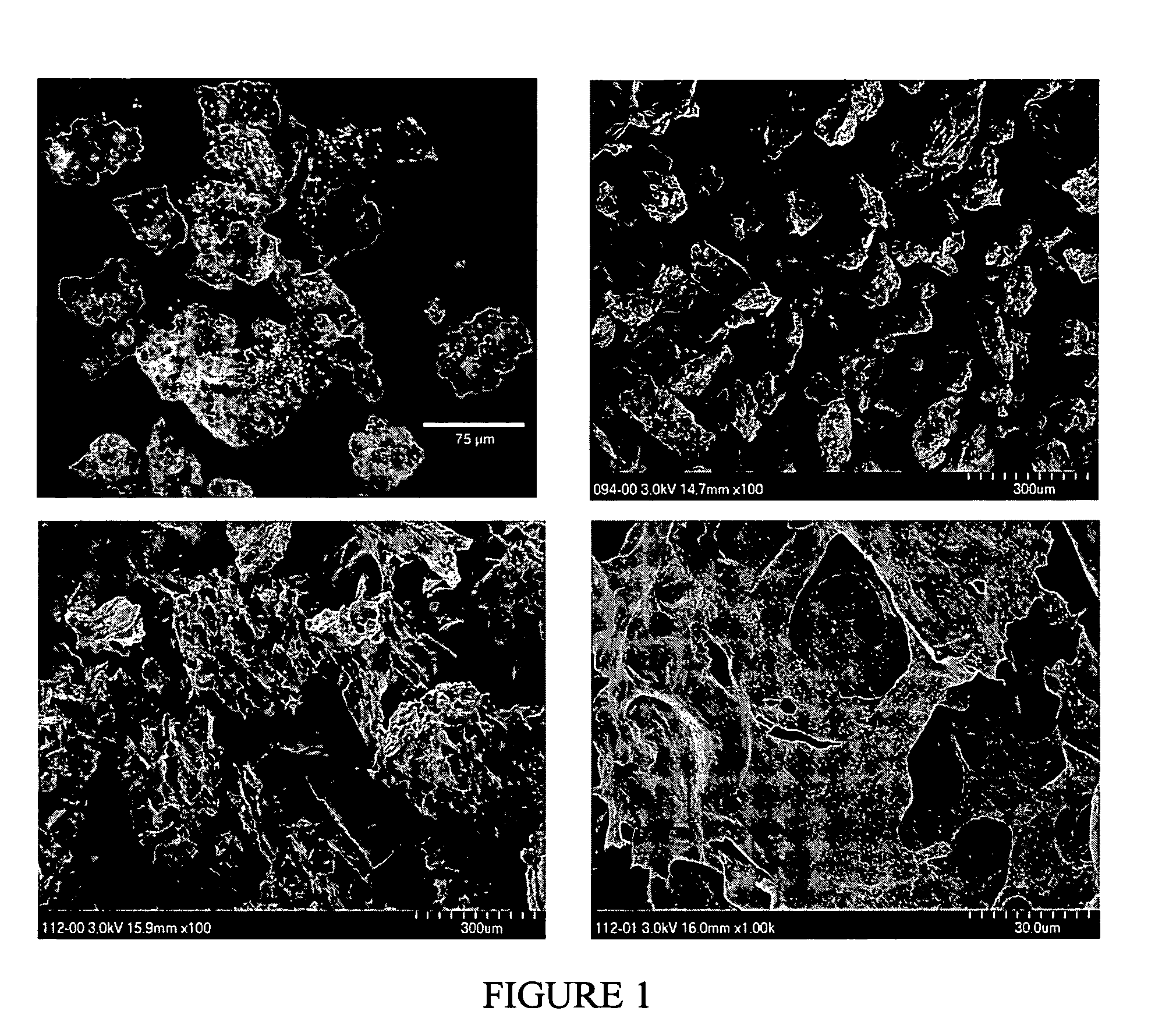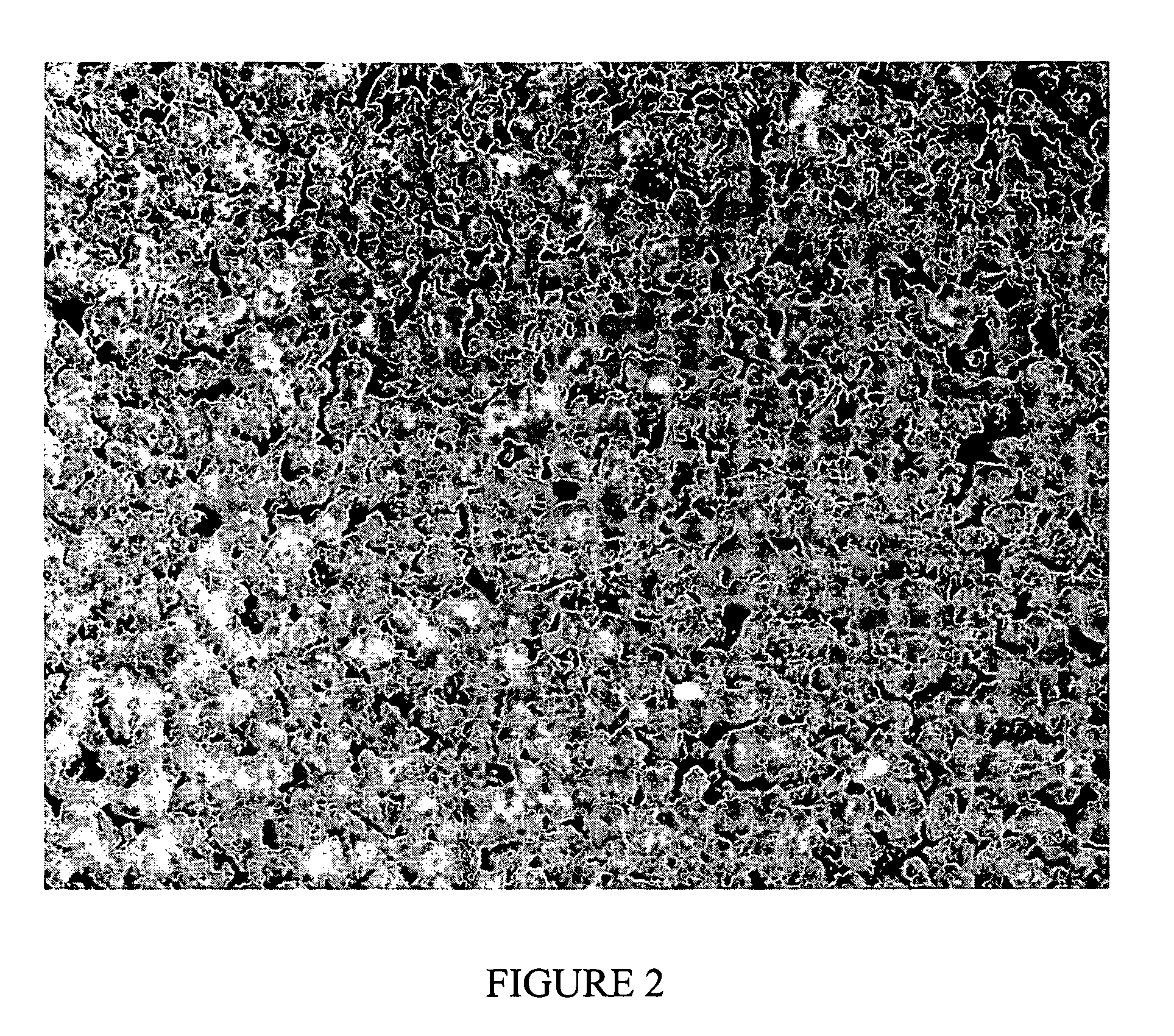Biocompatible protein particles, particle devices and methods thereof
a technology of biocompatible protein and particle device, which is applied in the direction of prosthesis, oil/fat/waxes non-active ingredients, microcapsules, etc., can solve the problems of uncontrollable release, insufficient strength, stability and support of previously developed devices, and insufficient device for controlled drug delivery
- Summary
- Abstract
- Description
- Claims
- Application Information
AI Technical Summary
Benefits of technology
Problems solved by technology
Method used
Image
Examples
example i
Collagen Modified Polyurethane Surface
[0175] Bovine fibrous collagen (1.715 g) was mixed with elastin (0.457 g) and heparin (0.114 g) in a two-syringe mixing system with the addition of 5 ml of distilled water and 3 ml of phosphate buffered saline (pH 7.4). When the mixture appeared uniform, the resulting material was dehydrated at 30° C. until 60% of the added water was removed. This paste (B-stage) was stored at 42° F. overnight. The B-stage was made into smaller pieces suitable for use in a single ball grinding device held at liquid nitrogen temperature. This grinding resulted in a particulate material which could be used as the surface treatment for a polyurethane film, which was prepared by casting a solution of Chronoflex-AR from DMAC (22% solids) and partially drying the film at 65° C. until the surface reached a semi-solid, sticky state. The collagenous particulate material was then uniformly added to this surface using a shaker device and the resulting composition dried ov...
example ii
[0176] Bovine fibrous collagen (1.715 g) was mixed with elastin (0.457 g) and heparin (0.114 g) in a two-syringe mixing system with the addition of 5 ml of distilled water and 3 ml of phosphate buffered saline (pH 7.4). When the mixture appeared uniform, it was spread on a flat surface and dehydrated overnight at 40° C. to yield a solid. This solid was broken into pieces and ground at liquid nitrogen temperature to yield particles.
example iii
Cross-Linking of Collagen / Elastin / Heparin Cohesive Body
[0177] The glutaraldehyde treatment of a cohesive body including collagen, elastin and heparin at a 7 / 2 / 1 ratio is as follows: add 0.2 ml of 50% aqueous glutaraldehyde to 100 ml of distilled water. To the stirred solution (magnet stir bar) add fully-hydrated cohesive body pieces (no more than 14 grams has been used at this point) and stir slowly (just enough to move the cohesive body pieces) for 2 hours at ambient temperature. The pieces are rinsed three times with fresh distilled water. Next 100 ml of water is added to the beaker with cohesive body pieces and approximately 0.13 g of glycine and 0.13 g of glutamine is added to the beaker and stirred slowly for 30 minutes. Next, the cohesive body pieces are rinsed 3 times with fresh water. The crosslinked cohesive body pieces are then removed from the beaker and placed on a glass plate or weighing dish and dried at 50° C. for approximately 48 hours.
PUM
| Property | Measurement | Unit |
|---|---|---|
| Length | aaaaa | aaaaa |
| Fraction | aaaaa | aaaaa |
| Fraction | aaaaa | aaaaa |
Abstract
Description
Claims
Application Information
 Login to View More
Login to View More - R&D
- Intellectual Property
- Life Sciences
- Materials
- Tech Scout
- Unparalleled Data Quality
- Higher Quality Content
- 60% Fewer Hallucinations
Browse by: Latest US Patents, China's latest patents, Technical Efficacy Thesaurus, Application Domain, Technology Topic, Popular Technical Reports.
© 2025 PatSnap. All rights reserved.Legal|Privacy policy|Modern Slavery Act Transparency Statement|Sitemap|About US| Contact US: help@patsnap.com



